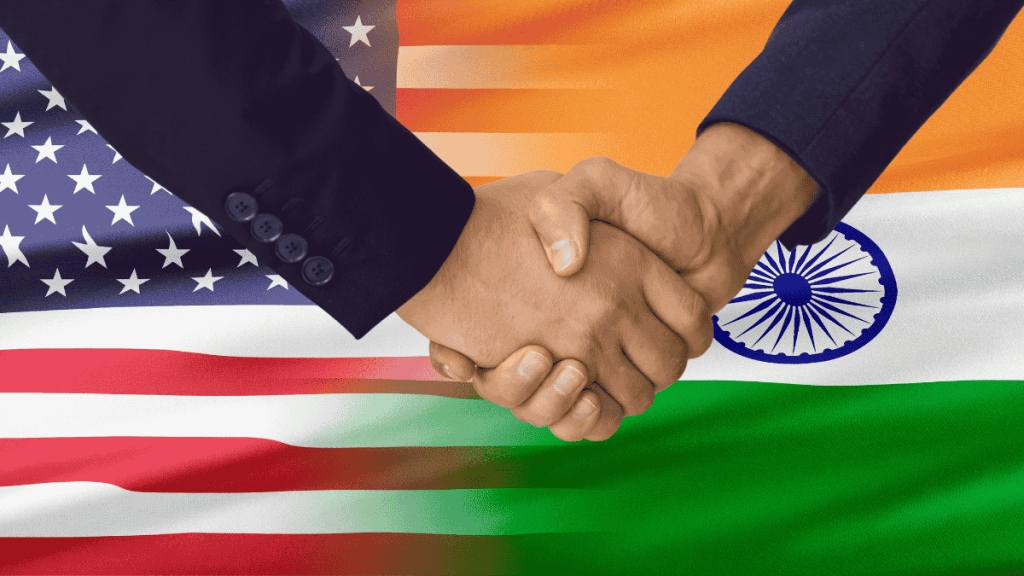The United States and India are inching closer to an interim trade agreement, with the US likely to reduce its proposed tariff rate to below 20 per cent from the initially suggested 26 per cent, according to a Bloomberg report. Indian officials are expected to visit the US soon to finalise the deal.
Bloomberg reports that India has already made its best offer and clearly defined its red lines—now, it’s the US’s turn to make a decision. While US President Donald Trump recently claimed that a deal with India is near, he has also issued warnings over India’s involvement with the BRICS group, adding a layer of complexity to the negotiations.
However, SBI Research, in its report, highlighted that even if the agreement falls through and the US imposes an additional 10 per cent tariff on Indian goods, India still has opportunities to diversify its exports and explore new markets.
Here’s how India can turn the tariff threat into an economic opportunity.
India’s chemical export gain could add 0.2% to GDP: SBI research
India stands to benefit from the current tariff realignment in the United States, particularly as most Asian countries now face higher duties compared to India. The country holds a revealed comparative advantage (RCA) in the chemical sector, including pharmaceuticals—one of the top five import categories for the US. While China and Singapore currently dominate this space, higher tariffs on Chinese goods offer India an opening to expand its share.
According to China Briefings, the US now imposes a 55 per cent tariff on Chinese goods. If India manages to secure a tariff rate lower than Singapore’s current 25 per cent, it could potentially capture 2 per cent of the US chemicals import market. This gain alone could add 0.2 per cent to India’s GDP.
India could also target market share from Japan, Malaysia, and South Korea—countries that currently face higher tariffs than India. By capturing just 1 per cent of their share in US-bound chemical exports, India could boost its GDP by an additional 0.1 per cent.
Apparel exports may add 0.1% to India’s GDP: SBI research
Apart from chemicals, India also holds a revealed comparative advantage in textiles, particularly in apparel and accessories, which it exports to the US. It faces stiff competition from countries like Bangladesh, Cambodia, Indonesia, and Vietnam.
However, with the exception of Vietnam, all these nations currently face higher tariffs than India. This gives India a pricing edge. At present, India accounts for 6 per cent of US apparel imports. If it manages to capture an additional 5 per cent market share from these competitors, it could add 0.1 per cent to the country’s GDP.
India eyes deeper ASEAN trade ties through FTA review
SBI research highlights that India is also eyeing trade expansion with ASEAN countries, where the Free Trade Agreement (AIFTA) is under review. The review aims to correct tariff distortions and fix weak “rules of origin” provisions that have allowed large-scale dumping of Chinese goods via ASEAN.
India’s exports to ASEAN have declined in share over the years, while imports have remained steady. Strengthening the FTA could help India tap deeper into ASEAN markets, especially in agriculture, chemicals, and processed products. Meanwhile, China’s trade with ASEAN has surged in recent years, with the region accounting for 16.4 per cent of its total exports in 2024. “India can enhance its exports to ASEAN and prevent the dumping of goods from China through ASEAN countries,” SBI noted.
Agriculture and dairy a sticking point
One of the key roadblocks in the India-US trade talks is access to the Indian agriculture and dairy sectors. The US is pushing for greater access, but India is concerned about the potential fallout for small farmers.
SBI Research estimates that opening the dairy sector could reduce domestic milk prices by 15 per cent, leading to an income loss of around Rs 1.03 lakh crore for Indian farmers. Milk imports may rise by as much as 25 million tonnes due to the resulting supply-demand gap.
Falling milk prices could wipe out Rs 0.51 lakh crore in GVA: SBI Research
The dairy sector contributes around 2.5–3 per cent to India’s GVA and employs about 8 crore people. A 15 per cent drop in milk prices could lead to a GVA loss of about Rs 0.51 lakh crore and pose a serious threat to rural livelihoods.
“The potential shift in producer surplus to consumer surplus might look beneficial to urban consumers, but it would severely impact small and marginal farmers,” SBI Research warned.
EU looking to deepen trade ties with India: media reports
In the previous week, Trump widened his tariff push by sending letters to several countries, including the EU, Japan, and South Korea, as well as seven smaller U.S. trading partners such as the Philippines, Sri Lanka, Iraq, and Libya, imposing duties ranging from 20 to 30 per cent starting August 1.
US President Trump has announced 30 per cent tariffs on imports from the European Union and Mexico starting August 1. Both the EU and Mexico have criticised the decision, calling it unfair and warning of possible countermeasures.
According to media reports, the EU is seeking to deepen trade ties with India and the Asia-Pacific region to counter the US tariffs. SBI Reasearch also highlighted that, “After higher tariffs imposed by the US on other countries, India can capture some of their market and look to increase its exports to the Asian countries of those commodities where it has revealed comparative advantage.”

